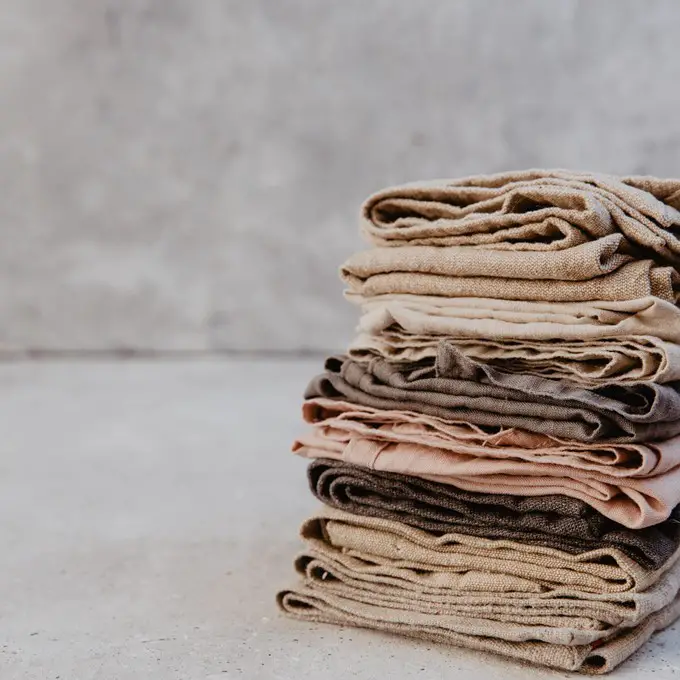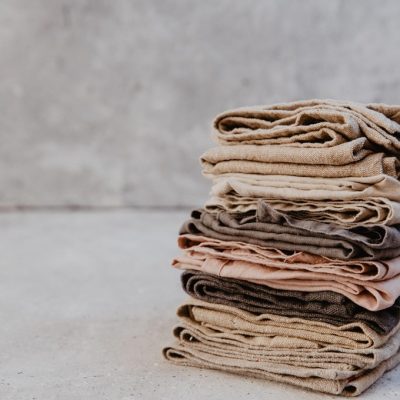Everything About Linen Material guide, Home fabric advice, Sheets curtains and tablecloths
Everything About Linen Material
21 Jan 2021
As one of the world’s oldest fabrics, linen has remained the most favored fabric for thousands of years. Linen was once more popular than it is now. Besides being strong, durable, and versatile, linen was so precious that it was used to wrap bodies of mummies in Egypt; therefore, preserving ancient treasures. Quality and sustainability are two properties that bring out linen beauty.
Linen Material Advice
In the contemporary world, many people have discovered the durability and high absorbance of linen. Thanks to this property, linen is available in many nuances and is used in making sheets, curtains, tablecloths, clothing, rugs, ropes, pillows, and many more household items. Recently, linen has gained popularity as a home and fashion textile, thanks to the exciting textured look.
Although linen has been around throughout millennia, some people do not know much about this fantastic natural fabric. In this article, you will learn everything about linen and why you need to have your new home household items made of linen fabric. Keep reading!
What is linen, and where does it come from?
At its core, pure linen is a textile derived from flax plant fibers. For approximately 10,000 years, linen has been used to make everything from clothing and cavasses to bedding and tablecloths.
Flax, the plant from which linen is derived, is typically grown in cooler regions. The durability of linen is attributed to the strong fibers. However, the process of manufacturing linen is time and resource-intensive. Despite being relatively expensive, many people prefer it over other cheaper synthetic materials, something attributed to its unprecedented quality.
To extract the fibers, plants are either uprooted or cut, but pulling from the ground is said to create more refined linen. Winnowing or ripping is done to remove seeds; then retting (exposing flax to moisture) follows to separate fibers from the plant stock. The fibers are collected together, spun to make yarns, and eventually woven into linen fabric.
From the soft, luxurious texture used in bedding to harsher fabrics used in bags, fibers derived from the flax plant can be woven differently to produce varying qualities of linen. No matter what linen household item you bring to your new home, you will definitely appreciate its quality.
Properties and benefits of linen
Have you ever had some encounters with linen before? If the answer is an awesome yes, then you probably know the primary properties of natural fabric. Linen is two to three times stronger than its rival, cotton, and, most importantly, it is natural and sustainable. As the world’s strongest natural textile, linen is recyclable and biodegradable.
If you’re new to linen, here is a range of benefits you get from having linen-made items in your new home.
Linen is highly absorbent: Linen can absorb up to 20% of its own weight before it feels damp and allows water to evaporate quickly. Absorbency makes it ideal for making many household items like towels, sheets, bath linen, and clothing. Thanks to this characteristic, the fabric is easy to dye and retains its color better and longer.
It is breathable: Because of its porous nature, linen releases moisture easily and faster and facilitates air circulation. Linen clothing will draw sweat out of your skin and dry quickly. The natural water-wicking property keeps you fresh when you sleep on linen sheets, hence a good night’s sleep.
Linen materials do not stretch: You must have read that linen is three times stronger than cotton. Buy linen curtains, tablecloths, sheets, or any household linen, and none will lose its shape. They are all designed to stand the test of time.
Household linen is hypoallergenic: If you suffer from allergies, you will undoubtedly benefit from linen products. The low thread count and loose weave make it less likely to trap dust and other elements. The natural anti-bacterial and non-allergenic properties make linen the best fabric for curtains, accent pillows, and sheets.
Linen has incredible temperature regulating properties: This is very interesting. Linen is a natural insulator – it will keep you cool during summer and warm during the cold winter months.
All linen products are incredibly durable: No matter what type of linen you buy, it will last longer than its equivalents from other materials. Linen is resistant to abrasion and tends to get better with age and softer with every wash.
Linen brings coziness to your new home: Items made with linen combine breathability, softness, hypoallergenic, and moisture-wicking properties to provide you with an unparalleled level of comfort.
Linen can be machine washed: The secret to making your linen sheets, clothing, and other items smoother is machine washing them. Wash in cold water. If you want a sturdy result, you can also dry clean your household linen.
It is good to note that the entire process of manufacturing linen augments sustainability. Flax plant requires less water to grow and can be grown without any chemicals coming into play. While the processing and treatments may negatively affect the environment, the impact is minimal.
The most significant downside of linen is the fact that it wrinkles easily. However, this shouldn’t be treated negatively because it is a sign of authenticity, which means whatever the item is, it is made from high-quality linen fabric. Wrinkled household linen can be made smoother by ironing with a low to medium-hot setting.
Taking care of linen
Although linen is notorious for being wrinkly, it is easy to care for. You can either machine wash or dry clean linen items using cold water.
Just kidding, but the wrinkles of high-quality linen are part of its beauty for a casual look. To keep wrinkles at bay, you can iron all linen items in your new home. Ironing gives a smooth, crisp result.
Everything about linen material Conclusion
If you’re looking for a way to make your new home super-cozy, linen fabric is the way to go. Besides being all-natural, your linens will get better and softer as it ages, so you’re sure to enjoy lines benefits for considerably longer. No matter your color preference, you will find any imaginable color to satisfy your taste.
Comments on this guide to Everything about linen material article are welcome.
Home Articles
Residential Architecture
Comments / photos for the Everything about linen material advice page welcome






